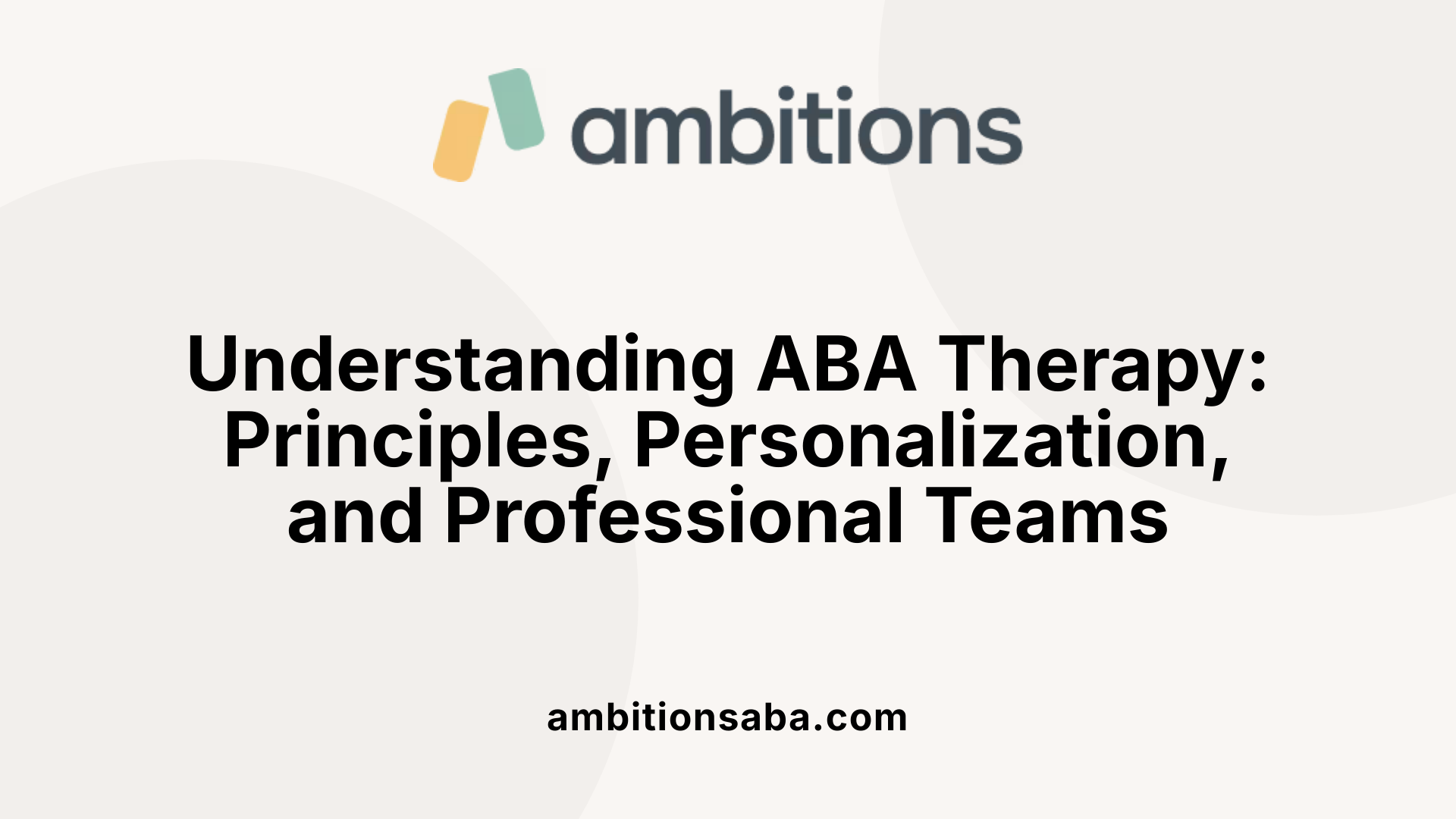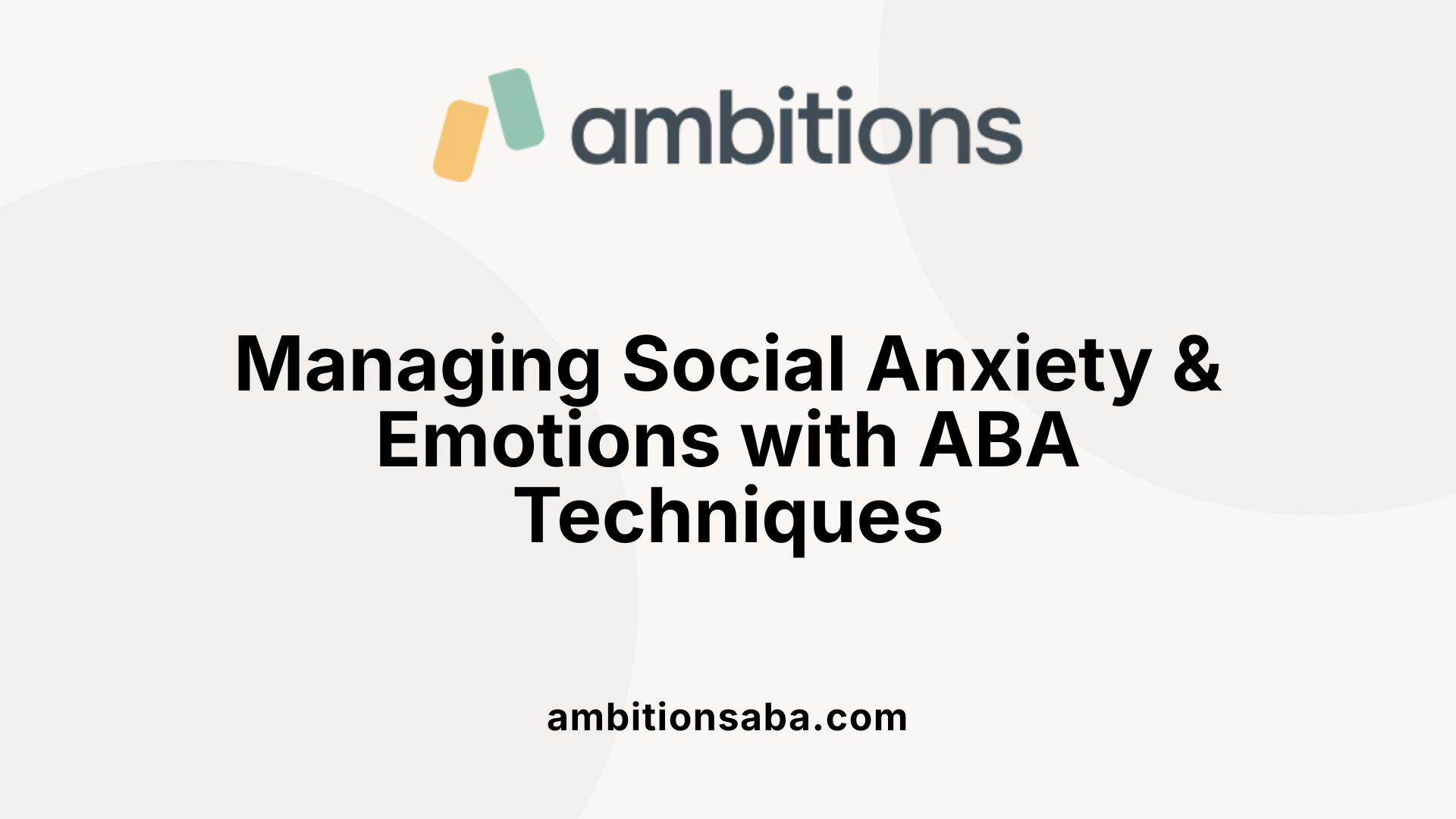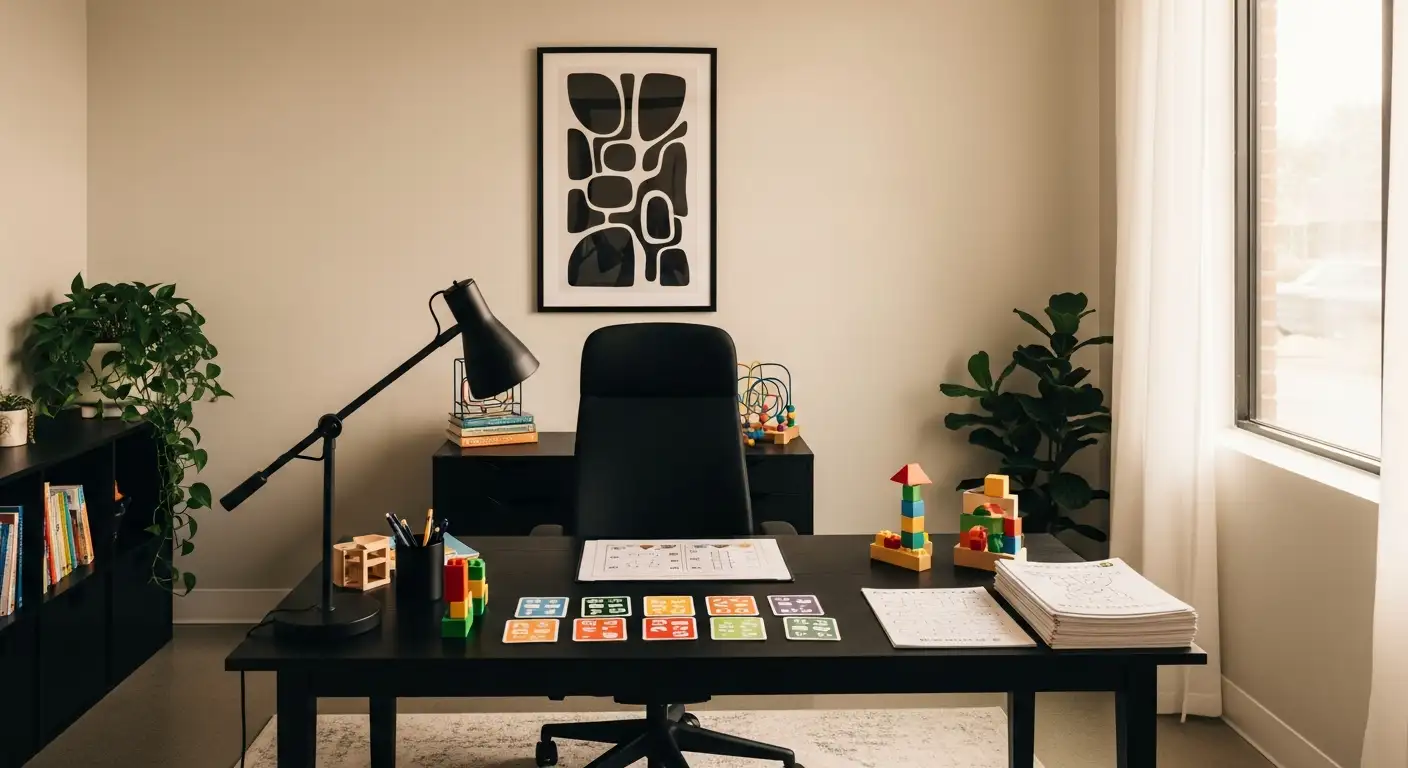Understanding ABA Therapy in Teen Social Skills Development
Applied Behavior Analysis (ABA) therapy, a scientifically grounded methodology, is widely recognized for its benefits in supporting individuals on the autism spectrum. While initially associated with young children, its application to teenagers seeking to improve social communication and interaction has garnered increasing attention. This article explores how ABA therapy supports social skills development in teens, highlighting evidence-based approaches, individualized treatment, and the critical role of professional guidance.
What is Applied Behavior Analysis (ABA) Therapy?

What is applied behavior analysis (ABA) therapy?
Applied Behavior Analysis (ABA) therapy is a scientifically validated approach focused on changing behavior through the principles of learning. It involves breaking down complex behaviors into manageable steps and using strategies like positive reinforcement, prompting, and structured interventions to encourage desirable actions while reducing harmful or challenging behaviors.
How are ABA treatment plans individualized?
ABA therapy always centers on personalization. Treatment plans are carefully tailored to meet the unique strengths, needs, and goals of each individual. This individualized approach ensures that interventions address specific social, communication, and daily living skills relevant to a person’s life.
Who provides ABA therapy?
ABA interventions are typically led by Board Certified Behavior Analysts (BCBAs) who supervise registered behavior technicians and other trained professionals. This structured team model ensures therapy follows standardized, evidence-based methods and maintains high-quality care.
What behaviors does ABA therapy focus on?
The therapy primarily aims to increase helpful, functional behaviors such as communication, social interaction, and adaptive daily skills. Simultaneously, it works to reduce problematic behaviors through data-driven techniques. This dual focus supports greater independence and better integration into daily life.
How does ABA therapy ensure ethical and effective practices?
ABA relies on ongoing data collection and analysis to track progress. Therapists use behavior data and graphs to evaluate effectiveness and adjust plans as needed. Ethical standards guide all interventions to promote respect, safety, and genuine progress for the individual receiving therapy.
| Aspect | Description | Impact on Therapy |
|---|---|---|
| Principles | Learning-based behavior modification | Creates systematic, measurable improvements |
| Individualization | Customized plans based on assessment | Addresses unique strengths and needs with targeted goals |
| Professional Team | Led by BCBAs with trained technicians | Ensures quality, standardized, and ethical treatment delivery |
| Behavior Focus | Increase positive, reduce challenging behaviors | Supports communication, social skills, and independence |
| Data-Driven & Ethical | Regular monitoring and ethical guidelines | Maintains responsible, effective, and respectful therapy |
How ABA Therapy Supports Social Skills in Teens with Autism

Enhancing social communication and interaction skills
ABA therapy focuses on improving social communication and interaction skills in teens with autism spectrum disorder (ASD) by breaking down complex social behaviors into manageable steps. Through individualized plans, teens learn to interpret social cues, maintain eye contact, engage in turn-taking, and respect personal boundaries. Positive reinforcement strategies such as praise, rewards, and social reinforcers strengthen these learned behaviors over time.
Addressing social anxiety and emotional regulation
ABA therapy also addresses social anxiety and emotional regulation, common challenges among teens with ASD. Techniques include breathing exercises, scripted responses, and gradual exposure to social situations. This personalized support helps teens manage their emotions and increasing confidence in social settings.
Use of role-playing to practice social scenarios
Role-playing is a core ABA technique used to practice real-life social scenarios safely. Teens rehearse initiating conversations, recognizing social cues like facial expressions and tone of voice, responding appropriately, and building confidence. These simulations prepare teens for everyday interactions and reduce anxiety.
Breaking down social skills into manageable steps
Behavioral analysis in ABA therapy deconstructs social skills into smaller, achievable components. This stepwise progression allows for focused skill acquisition and ensures mastery before moving to more complex social tasks. It supports gradual learning and increased retention.
Skill generalization to everyday life
A vital element of ABA therapy is skill generalization—ensuring that social abilities learned in therapy sessions transfer to real-world situations like school, home, and peer groups. Therapists employ strategies such as group sessions and peer interactions to reinforce skills in various settings, promoting independence and long-term social competence.
How does ABA therapy benefit individuals with autism?
ABA therapy benefits individuals with autism by systematically teaching essential social, communication, and daily living skills through evidence-based, tailored interventions. It increases helpful behaviors and reduces challenges by using positive reinforcement and carefully analyzing environmental factors. By involving family and incorporating treatment across diverse environments, ABA maximizes progress, fosters independence, and improves quality of life for teens with ASD.
Techniques and Strategies Employed in ABA Therapy for Teens

What techniques are commonly used in ABA therapy?
ABA therapy for teens utilizes a variety of scientifically supported techniques tailored to individual needs, especially to improve social skills and communication.
Positive Reinforcement Mechanisms: These include praise, rewards, token systems, and social reinforcers like high fives or verbal encouragement. They motivate teens to acquire and maintain new skills by reinforcing desirable behaviors.
Role-Playing and Modeling: Role-playing exercises help teens practice initiating conversations, interpreting social cues, and responding in social situations. Modeling provides live demonstrations of appropriate behaviors for teens to imitate and learn.
Visual Supports: Tools such as social scripts and schedules assist teens in understanding expected social interactions and routines. They help reinforce learning and provide structure in therapy sessions.
Discrete Trial Training and Behavior Chaining: These methods break down complex skills into smaller, manageable steps. Discrete trial training involves repeated practice of these steps, while behavior chaining links them together to form a complete skill.
Peer Groups and Inclusive Social Practice: Group sessions allow teens to engage in real-time social interactions with peers. This fosters social bonds and creates opportunities for practicing skills in natural environments.
ABA therapy combines these techniques within frameworks like the ABC (Antecedent-Behavior-Consequence) model to analyze behaviors and guide intervention. Approaches such as prompting, fading, and natural environment teaching help generalize skills beyond therapy sessions. By integrating these individualized and evidence-based strategies, ABA therapy supports teens with autism spectrum disorder (ASD) in achieving greater social competence, independence, and confidence.
Who Provides ABA Therapy? The Team Behind the Intervention

Roles of Board Certified Behavior Analysts (BCBAs)
ABA therapy is primarily led by Board Certified Behavior Analysts, or BCBAs. These professionals are responsible for conducting thorough assessments, designing individualized treatment plans, and overseeing the intervention's overall progress. Their expertise ensures that each teen's unique strengths and challenges are addressed with tailored strategies.
Contribution of Registered Behavior Technicians (RBTs) and Behavioral Technicians
Registered Behavior Technicians (RBTs) and other behavioral technicians play a crucial supportive role. Under BCBA supervision, they implement the daily therapy sessions, applying strategies such as positive reinforcement, role-playing, and behavioral guidance. Their direct interaction with teens ensures consistent and effective delivery of ABA principles.
Certification and Professional Standards
All providers involved in ABA therapy adhere to stringent certification and professional standards. BCBAs must obtain certification through recognized board exams, ensuring evidence-based and ethical practices. RBTs and behavioral technicians also receive standardized training and credentials to maintain quality and safety in treatment delivery.
Multi-disciplinary Teams Led by Behavior Analysts
Beyond BCBAs and RBTs, some ABA programs include multi-disciplinary teams incorporating speech therapists, occupational therapists, and psychologists. However, the behavioral analyst typically coordinates the team to integrate complementary expertise, ensuring comprehensive care tailored to social, communication, and behavioral goals.
Settings Where ABA Therapy is Delivered
ABA therapy for teens is versatile and can be delivered in various settings based on individual needs. These include home-based environments, clinics, schools, and specialized autism centers. This flexibility supports consistent skill-building across different social contexts, reinforcing generalization of learned behaviors.
Together, this team structure guarantees that ABA interventions are professionally guided, personalized, and effective, supporting teens with autism to develop essential life and social skills.
Individualized Approach: Tailoring ABA Therapy to Teen Needs
Initial Assessments and Social Skills Evaluations
ABA therapy for teens with autism spectrum disorder (ASD) begins with thorough assessments to understand each individual's social abilities, communication skills, and behavior patterns. These evaluations identify specific strengths and areas requiring support, forming the foundation for a tailored treatment plan.
Setting Personalized Treatment Goals
Based on assessment data, therapists set customized goals aimed at fostering essential social, communication, and adaptive behaviors. These goals reflect the teen's developmental stage and daily living needs, promoting meaningful progress in real-world situations.
Adjusting Interventions Based on Data and Progress
ABA therapy uses continuous data collection and graphical analysis to monitor each teen's response to interventions. This ongoing evaluation allows therapists to refine strategies, ensuring that treatment remains effective and evolves with the individual's developmental changes.
Consideration of Strengths, Weaknesses, and Interests of the Teen
Treatment plans are designed with a compassionate, person-centered approach. Therapists consider personal interests and motivators, which are integrated into session activities and positive reinforcement techniques to maximize engagement and learning outcomes.
Flexibility in Session Length, Frequency, and Settings
ABA therapy offers adaptable scheduling options, varying session length and frequency to suit the teen's needs and lifestyle. Therapy can be delivered across diverse settings—including home, clinic, and school environments—to support generalization of skills and maintain comfort.
This individualized approach ensures that ABA therapy is not only effective but also responsive to the unique requirements of teens on the autism spectrum, empowering them to develop vital social and communication skills.
Evidence and Research Supporting ABA Therapy Effectiveness
What do global studies say about ABA therapy?
ABA therapy's effectiveness is supported by extensive global research, including a landmark study involving about 500 children across multiple countries. This research demonstrated that ABA is beneficial across diverse cultural and social contexts, confirming its adaptability and widespread applicability. These findings suggest that ABA therapy can successfully enhance social and communicative skills in diverse populations.
How important is early and intensive therapy?
Research underscores the critical importance of early intervention and intensive therapy duration. Children who begin ABA therapy at younger ages and receive longer, more personalized treatment tend to show greater improvements. Such early and tailored interventions help in building foundational social and communication skills during key developmental stages, promoting better long-term outcomes.
What are the long-term improvements observed?
High-quality, personalized ABA interventions lead to significant enhancements in social interactions, communication, and daily living skills. These gains foster increased independence and functional abilities that extend beyond therapy sessions into everyday life. Social skills groups, role-playing, and positive reinforcement strategies help teens and children with autism develop confidence, interpret social cues, and maintain healthy peer relationships.
Which factors influence ABA therapy success?
Research consistently identifies therapy duration and customization as pivotal factors for successful outcomes. Individualized treatment plans adapt to each person's strengths, weaknesses, and developmental stage, maximizing progress. Ongoing data collection and behavior tracking allow for effective evaluation and adjustment of interventions, ensuring therapy remains relevant and impactful.
What do neuroscientific studies reveal about ABA's impact?
Neuroscientific research, such as that highlighted in the McGill Journal of Medicine, reveals that children with autism often exhibit less activity in brain regions responsible for processing facial expressions and vocal tone. ABA therapy targets these challenges through structured activities and reinforcement to improve social responsiveness and communication skills, contributing to enhanced brain function related to social behavior.
| Research Focus | Key Findings | Implications for Therapy |
|---|---|---|
| Global Multicultural Studies | ABA effective across diverse settings | Supports widespread adoption and adaptability |
| Early and Intensive Intervention | Greater progress when therapy begins early | Emphasizes importance of early diagnosis |
| Long-Term Skill Development | Improvements in social, communication, daily skills | Promotes functional independence |
| Duration and Customization | Tailored plans and sufficient therapy hours crucial | Personalized approaches maximize benefits |
| Neuroscientific Evidence | ABA addresses neural processing deficits in ASD | Guides targeted interventions to improve brain activity |
Addressing Social Anxiety and Emotional Regulation Through ABA

How Does ABA Therapy Incorporate Breathing Exercises and Scripts?
ABA therapy integrates breathing exercises and scripted dialogues as practical tools to help teens manage social anxiety. These exercises serve as calming techniques, teaching individuals how to regulate physiological responses during stressful social interactions. Scripts provide structured, rehearsed responses, reducing uncertainty and enabling smoother communication.
What Is the Role of Gradual Exposure in Tackling Social Challenges?
Gradual exposure involves progressively introducing teens to increasingly challenging social scenarios within a controlled environment. This technique desensitizes anxiety triggers by familiarizing individuals with social cues and demands at a manageable pace, thereby improving coping skills and reducing avoidance behaviors.
How Does ABA Teach Emotional Recognition and Self-Regulation?
ABA programs emphasize recognizing emotions in oneself and others through modeling, role-playing, and the use of visual aids. Teens learn to identify feelings and develop strategies for self-regulation, such as pausing before reacting, using calming techniques, and expressing emotions appropriately.
In What Ways Does Repeated Practice Support Confidence?
Repeated practice during ABA sessions reinforces new skills in safe settings, allowing teens to build proficiency and self-assurance before applying these skills in real life. Positive reinforcement highlights progress, encouraging continued engagement and confidence in social situations.
How Is This Integrated Within Broader ABA Social Skills Programs?
These strategies form a crucial component of comprehensive ABA social skills programs that also include communication training, peer interactions, and behavior modification. By addressing anxiety and emotional regulation, ABA therapy equips teens with essential tools for increased social competence and independence.
Role of Families and Social Groups in ABA Therapy
Why Is Family Involvement Important in ABA Therapy?
Family involvement is essential in ABA therapy as it fosters collaboration between therapists and caregivers, ensuring treatment is consistent across settings. Parents and family members actively participate in goal setting and monitoring progress, which helps tailor interventions to the teen’s unique needs and supports long-term behavioral gains.
How Does Collaborative Goal Setting Work?
Therapists work closely with families to identify meaningful social and communication objectives for the teen. This collaboration creates personalized treatment plans that align with family priorities and lifestyle, making therapy more effective and relevant.
What Role Do Social Skills Groups Play?
Social skills groups and peer interactions are key components of ABA therapy. They provide safe, structured environments where teens can practice social scenarios, learn to interpret cues, and build confidence. Group sessions foster real-time social practice and help cultivate friendships and supportive peer networks.
How Are Skills Applied in Real Life?
ABA therapy encourages the real-world application of skills through activities that generalize learned behaviors beyond therapy sessions. Families are coached to embed social skills practice in daily routines, school settings, and community activities, helping teens become more independent and socially competent.
How Do Social Bonds and Inclusive Environments Benefit Teens?
Building social bonds within inclusive peer groups nurtures emotional well-being and reduces social anxiety. ABA therapy uses role-playing, positive reinforcement, and peer modeling to create welcoming environments where teens feel supported and motivated to engage socially.
Generalization and Maintenance of Social Skills Learned in ABA
Teaching Skills Transferable to Everyday Settings
ABA therapy emphasizes teaching social skills that teens can apply beyond the therapy room. Therapists focus on breaking down complex behaviors into manageable steps tailored to individual needs, which helps teens practice these skills in real-life situations such as school, home, and community settings.
Monitoring Long-Term Retention of Behaviors
Behavior data and progress graphs are continuously used to track the teen's social skill development over time. This ongoing evaluation allows the therapy team, led by BCBAs, to adjust and customize interventions to promote lasting positive outcomes.
Fostering Independence and Confidence
ABA sessions incorporate role-playing, modeling, and positive reinforcement to build teens’ confidence in social interactions. These techniques help teens interpret social cues, engage in conversations, and respond appropriately, fostering their independence and self-assurance.
Use of Natural Environment Teaching Techniques
Natural environment teaching is an integral part of ABA, encouraging skill use in everyday settings rather than isolated clinical ones. This approach bridges therapy to real life, supporting teens in generalizing skills such as turn-taking and recognizing emotions during peer interactions.
Encouraging Ongoing Practice Beyond Therapy Sessions
Family involvement and collaboration are core components of sustaining social skills gains. Parents and caregivers are supported to reinforce skills outside therapy hours, ensuring consistent practice and maintenance of socially significant behaviors for long-term success.
The Lasting Impact of ABA Therapy on Teen Social Development
ABA therapy represents a scientifically supported, personalized, and compassionate approach to enhancing social skills among teenagers with autism spectrum disorder. By breaking down complex behaviors into manageable parts, employing evidence-based techniques such as role-playing and positive reinforcement, and involving dedicated professionals and families, ABA fosters meaningful progress in communication, social interaction, and emotional regulation. Although effectiveness varies by individual, the research underscores ABA therapy's potential to empower teens toward greater independence and social success, making it a valuable component of comprehensive autism care.
References
- What is ABA Therapy for Teens Really Like?
- Evaluating the Effectiveness of Applied Behavior Analysis ...
- ABA therapy enhances Social Skills
- Can ABA Therapy Help Improve Social Skills ?
- How ABA Therapy Helps Teens Develop Social Skills
- Enhancing Social Skills Through ABA Therapy
- Applied Behavior Analysis (ABA)
- Types Of ABA Therapy Jobs And Their Degree Requirements
- Applied Behavior Analysis (ABA)



